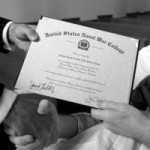That Americans don’t get enough exercise is not news to most people, but now the statistics are official: only 20.6 percent of adult Americans get the amounts of weekly exercise recommended by the U.S. government, according to a recent survey released by the Centers for Disease Control and Prevention (CDC).
Those recommended amounts are at least two and a half hours of moderate-intensity aerobic exercise each week or 75 minutes of vigorous-intensity activity, or some combination of both. Also recommended is some sort of muscle and strength training twice a week, such as push-ups or weight training.
According to the CDC, lack of physical activity is linked to higher rates of obesity and type 2 diabetes, which has soared in the last 30 years, concurrent with both higher amounts of fat, salt and sugar in processed foods and more sedentary lifestyles in Western societies. Worldwide, more than 5 million premature deaths annually are now linked to physical inactivity—more than those caused by smoking.
Of those who failed to meet the requirements, more were male than female, with the highest rate of regular exercise among the 18-24 age group (32 percent) and the lowest among the 65 and older group (16 percent).
Exercise rates were about evenly split between racial and ethnic groups with a slightly lower overall rate among Hispanics. However, geography appears to play a big part in the proclivity of people toward regular exercise. The lowest percentage who do so live in Tennessee and West Virginia (13 percent) while the highest percentage of regular exercisers live in Colorado (37 percent). Not surprisingly, the highest obesity rate by state is found in West Virginia (33 percent) while the lowest is found in Colorado (18.7 percent).
The CDC says, however, that the news is not all bad. Even though only about a fifth of the population is meeting all the guidelines, about half of American adults are meeting the aerobic requirements (such as running or brisk walking), and some 29 percent are meeting the strength-only guidelines. The key is the finding the right balance of both.
Accessibility to exercise facilities seems to be a factor with the report calling on communities to provide more opportunities for adults to exercise. One suggestion has been to open schools after hours for adults to use gym and workout amenities. The CDC funds obesity-fighting programs in 25 states and is looking to expand into more.
The CDC study was published May 2, 2013, in Morbidity and Mortality Weekly Report.






Speak Your Mind